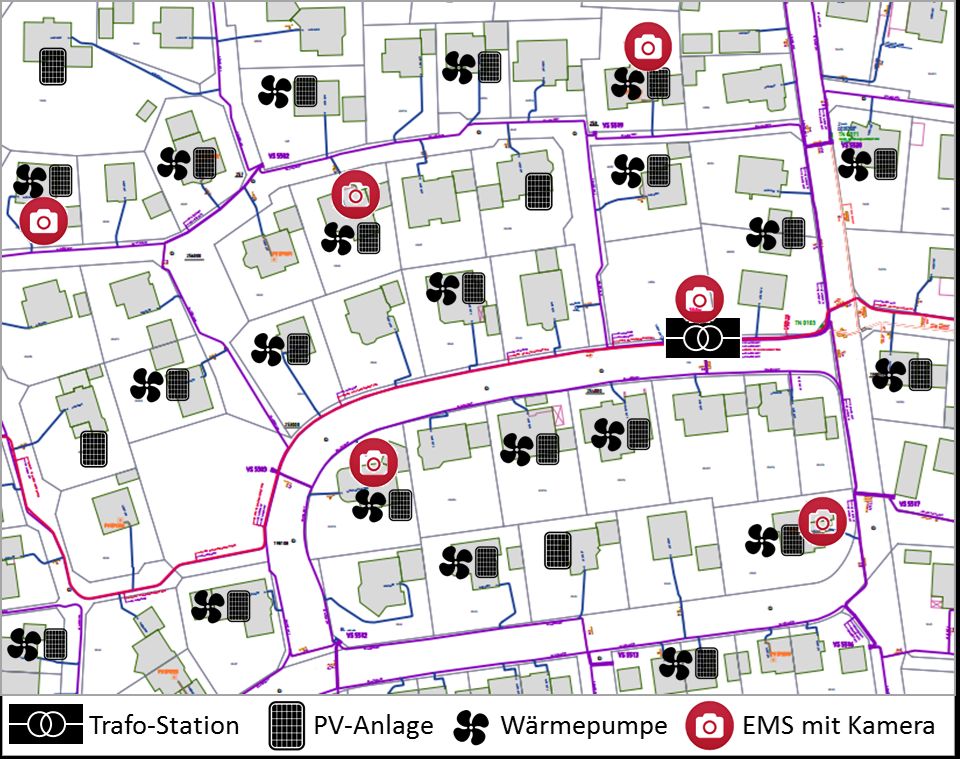| Duration: | Juli 2018 - Juni 2021 |
| Contracting Authority/ Sponsors: | Ministerium für Umwelt, Klima und Energiewirtschaft Baden Württemberg |
| Project Partners: | Hochschule Offenburg, Institut für Energiesystemtechnik (INES); Stadtwerke Ulm/Neu-Ulm Netze GmbH; Projekthaus Ulm (Betreiber: Joachim Kober GbR); Mondas GmbH |
| Project Focus: |
PV2WP – PV Prediction for Grid-Compatible Control of Heat Pumps

Heat pumps are increasingly used to provide new buildings with an environmentally friendly heat supply. This results in a significant increase and change in the electrical loads in the distribution grids. However, when heat pump use is made contingent upon energy supply, heat pumps put very little strain on distribution grids and can even contribute to their stability. This project seeks to optimize electricity loads for heat pumps operated in conjunction with PV systems. To this end, Fraunhofer ISE is developing forecasting algorithms based on local sky imagers and the resulting short-term forecasts for PV generation. The technology will be tested in real operation at the Projekthaus Ulm, with the resulting opportunities for improvement upscaled for the distribution grid.
In order to integrate fluctuating loads and power generators into the grid cost-effectively, the energy industry needs intelligent load management solutions. Intelligent, predictive algorithms for controlling heat pumps in combination with other system components such as PV or storage systems and possibly grid signals offer one such promising solution. These algorithms rely on short-term forecasts for solar power generation. Load forecasts, which are typically based on historical load profiles, weather data and usage plans, are also essential.
Since PV power forecasts require a very high temporal resolution (one-minute increments) for this application, established solar irradiance forecasts based on satellite data and numerical models are not suitable due to their insufficiently low resolution. Forecasts based on sky imagers represent a relatively new method that has the potential to generate predictions with a high degree of spatial and temporal resolution.
System adjustments at the Projekthaus Ulm
The forecasting algorithms developed will be tested in a real-world object with a PV system and heat pump – the Projekthaus Ulm. Not only does the Projekthaus Ulm have both of these devices available, it is also equipped with extensive measuring equipment and can provide historical measurement data going back a number of years. Various test scenarios will be run at the Projekthaus Ulm, with the aim of optimizing both the individual systems and the system as a whole. The opportunities for improvement identified for the accumulated load profiles will then be upscaled for the distribution grid. However, it must be assumed that the use of heat pumps and forecasting systems are not uniformly widespread. This project will partner with the public utility companies in the city of Ulm to quantify the potential offered by widespread use in the distribution grid.
The results of the project will contribute to substantial improvement in grid integration and the suitability of heat pumps for use with smart grids. The project also seeks to improve the economic efficiency of energy plants. The results will contribute to the safe and stable operation of distribution grids, which are expected to manage an increasing share of decentrally generated renewable energy as well as additional electrical loads stemming from heat pumps.